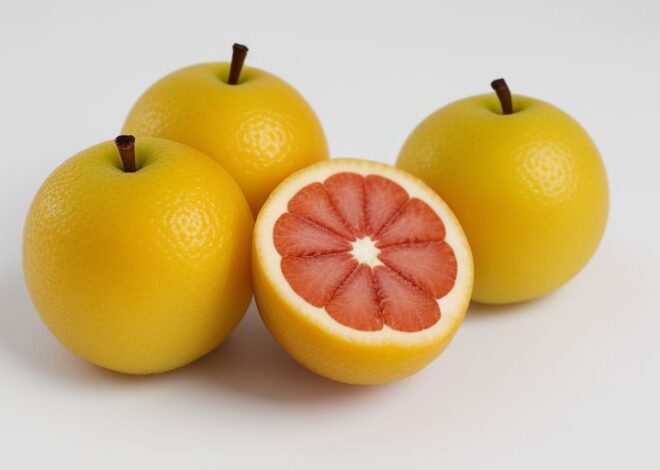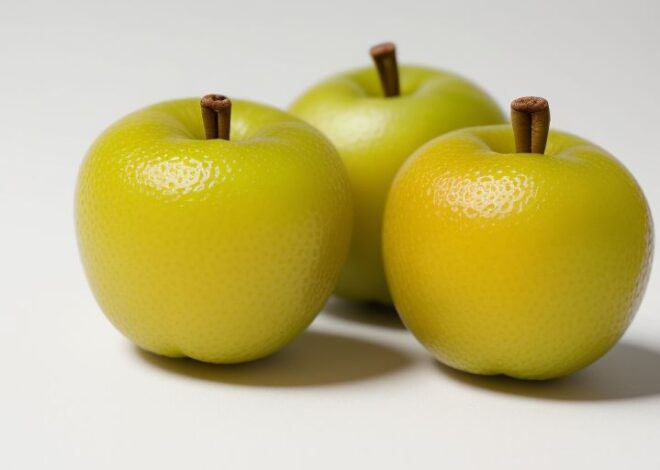
Satsuma
Introduction
Satsuma is a type of mandarin orange (Citrus unshiu) native to Japan and widely cultivated in many parts of the world. It is a small, usually seedless, and easy-to-peel fruit with a sweet and tart flavor. Satsumas are often eaten fresh, used in cooking, and made into juice, marmalade, and other products.
Etymology
The name “Satsuma” comes from the former Satsuma Province in southern Japan, where the fruit was first cultivated. The word “Satsuma” is derived from the Japanese words “satsuma” (), which refers to the province, and “mikan” (), meaning “mandarin orange”.
Description
Satsumas are small to medium-sized mandarin oranges, typically 5-7 cm (2-3 inches) in diameter. They have a loose, easy-to-peel skin that is usually a deep orange color. The flesh is juicy, sweet, and tart, with a flavor that is both sweet and slightly sour. Satsumas are usually seedless or have very few seeds.
Taxonomy and Cultivars
Satsumas are a type of mandarin orange (Citrus reticulata) and are closely related to other citrus fruits like oranges, lemons, and limes. There are several cultivars of Satsumas, including:
| Cultivar | Characteristics |
|---|---|
| ‘Owari’ | Most widely cultivated, seedless, and sweet |
| ‘Brown Select’ | Seedless, sweet, and juicy |
| ‘Mihowase’ | Seedless, sweet, and tart |
| ‘Kishu’ | Small, seedless, and sweet |
Distribution and Habitat
Satsumas are native to Japan and are widely cultivated in many parts of the world, including:
- Asia: Japan, China, Korea, and Southeast Asia
- Europe: Spain, Italy, and Greece
- Americas: United States, Brazil, and Mexico
- Africa: South Africa and Egypt
Satsumas prefer a subtropical climate with mild winters and hot summers. They are often grown in greenhouses or containers to protect them from frost and extreme weather conditions.
Cultivation
Satsumas are relatively easy to cultivate and require:
- Well-drained soil with a pH between 6.0 and 7.0
- Full sun to partial shade
- Regular watering and fertilization
- Pruning to maintain shape and promote fruiting
Production and Uses
Satsumas are widely cultivated for their fruit, which is eaten fresh, used in cooking, and made into various products like:
- Juice
- Marmalade
- Jam
- Preserves
- Candied peel
Phytochemistry
Satsumas contain various phytochemicals, including:
- Vitamin C
- Flavonoids
- Carotenoids
- Limonoids
These compounds have been shown to have antioxidant, anti-inflammatory, and antimicrobial properties.
Flavor
Satsumas have a unique flavor that is both sweet and tart, with a hint of bitterness. The flavor is often described as:
- “Sweet and tangy”
- “Juicy and refreshing”
- “A perfect balance of sweet and sour”
Toxicity
Satsumas are generally safe to eat and are not known to be toxic. However, some people may be allergic to citrus fruits or have sensitivities to certain compounds like limonoids.
Nutrition
Satsumas are a good source of:
- Vitamin C
- Potassium
- Fiber
- Antioxidants
One medium-sized Satsuma (100g) contains:
- Energy: 45 kcal
- Carbohydrates: 11g
- Fiber: 2g
- Vitamin C: 30mg
Culture
Satsumas have a significant cultural and historical importance in Japan, where they are considered a symbol of good luck and prosperity. They are often given as gifts during the New Year (Oshogatsu) and are used in traditional ceremonies and festivals.
Quotes
- “Satsumas are like little balls of sunshine, bursting with flavor and joy.” – Chef Yotam Ottolenghi
- “The sweet and tangy flavor of Satsumas is like a symphony on the palate.” – Food writer, Elizabeth David
Tables
| Nutrient | Amount (per 100g) |
|---|---|
| Energy | 45 kcal |
| Carbohydrates | 11g |
| Fiber | 2g |
| Vitamin C | 30mg |
| Potassium | 150mg |
| Cultivar | Characteristics |
|---|---|
| ‘Owari’ | Most widely cultivated, seedless, and sweet |
Culture (continued)
Satsumas are also an important part of Japanese cuisine, where they are used in various dishes, such as:
- Marmalade (, māmaredo)
- Juice (, jūsu)
- Salad dressings (, sarada dresingu)
- Sauces (, sōsu)
History
Satsumas have a long history in Japan, dating back to the 16th century. They were first cultivated in the Satsuma Province (now Kagoshima Prefecture) and were highly valued for their flavor and fragrance.
Festivals and Traditions
Satsumas are an important part of Japanese festivals and traditions, such as:
- New Year (Oshogatsu,): Satsumas are given as gifts and used in traditional ceremonies.
- Girls’ Day (Hinamatsuri,): Satsumas are used to decorate traditional dolls and offerings.
- Autumn Festivals (Aki Matsuri,): Satsumas are used in traditional foods and offerings.
Symbolism
Satsumas are a symbol of:
- Good luck and prosperity
- Abundance and fertility
- Hospitality and generosity
Fun Facts
- Satsumas are also known as ” Mandarin Oranges” or “Tangerines” in some countries.
- Satsumas are a popular ingredient in Japanese cuisine, and are often used in sushi and sashimi dishes.
- Satsumas are a good source of vitamin C and potassium, making them a healthy snack option.
Conclusion
Satsumas are a delicious and versatile fruit, with a rich history and cultural significance in Japan. Whether eaten fresh, used in cooking, or made into various products, Satsumas are a true delight. So next time you try a Satsuma, remember its rich history and cultural importance, and enjoy its sweet and tangy flavor!
References
- “Satsuma Mandarin”. Citrus Variety Collection. University of California, Riverside.
- “Satsuma”. Japan Guide.
- “Satsuma Mandarin Orange”. Specialty Produce.
- “The Cultural Significance of Satsumas in Japan”. Japan Today.


